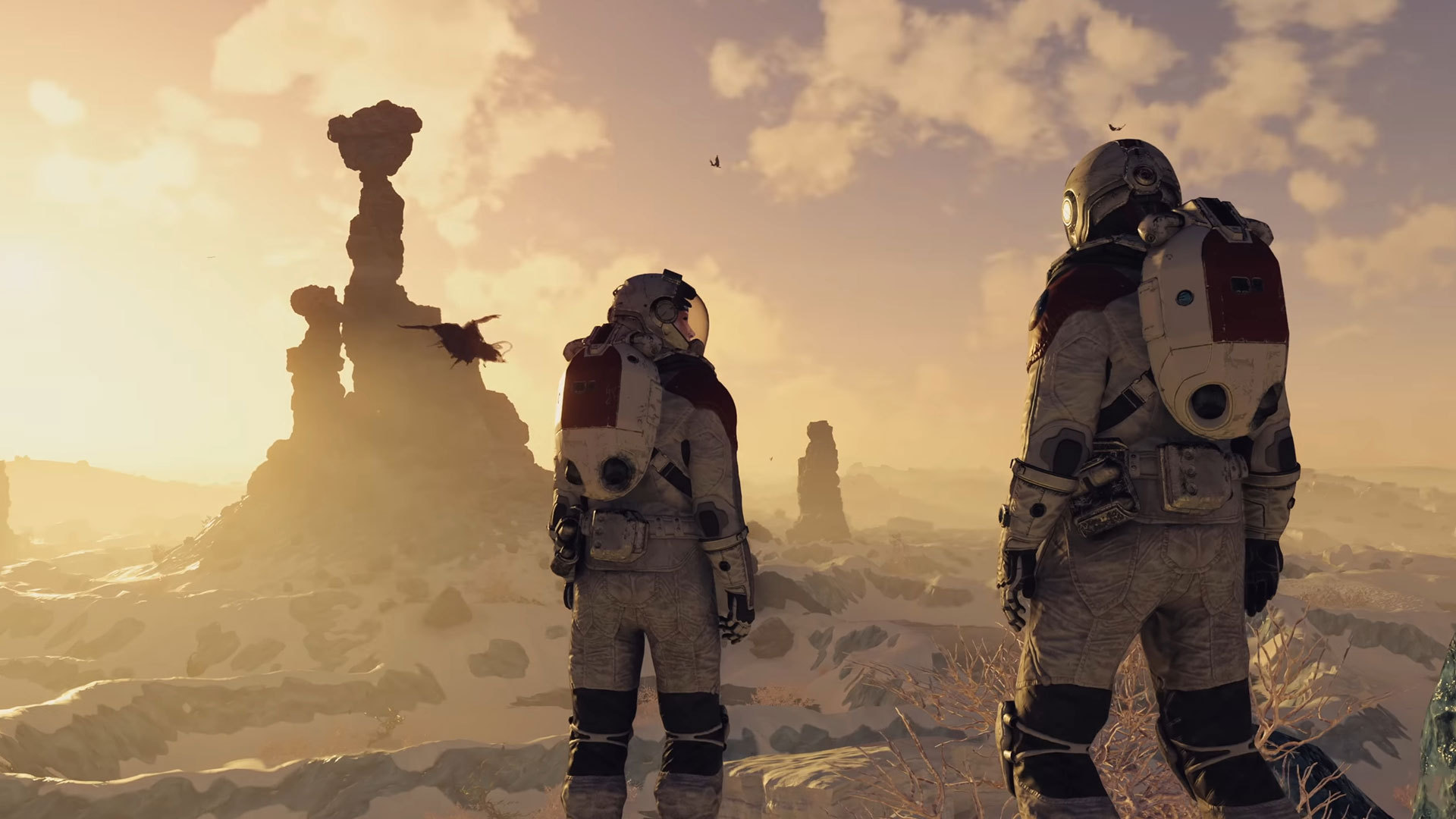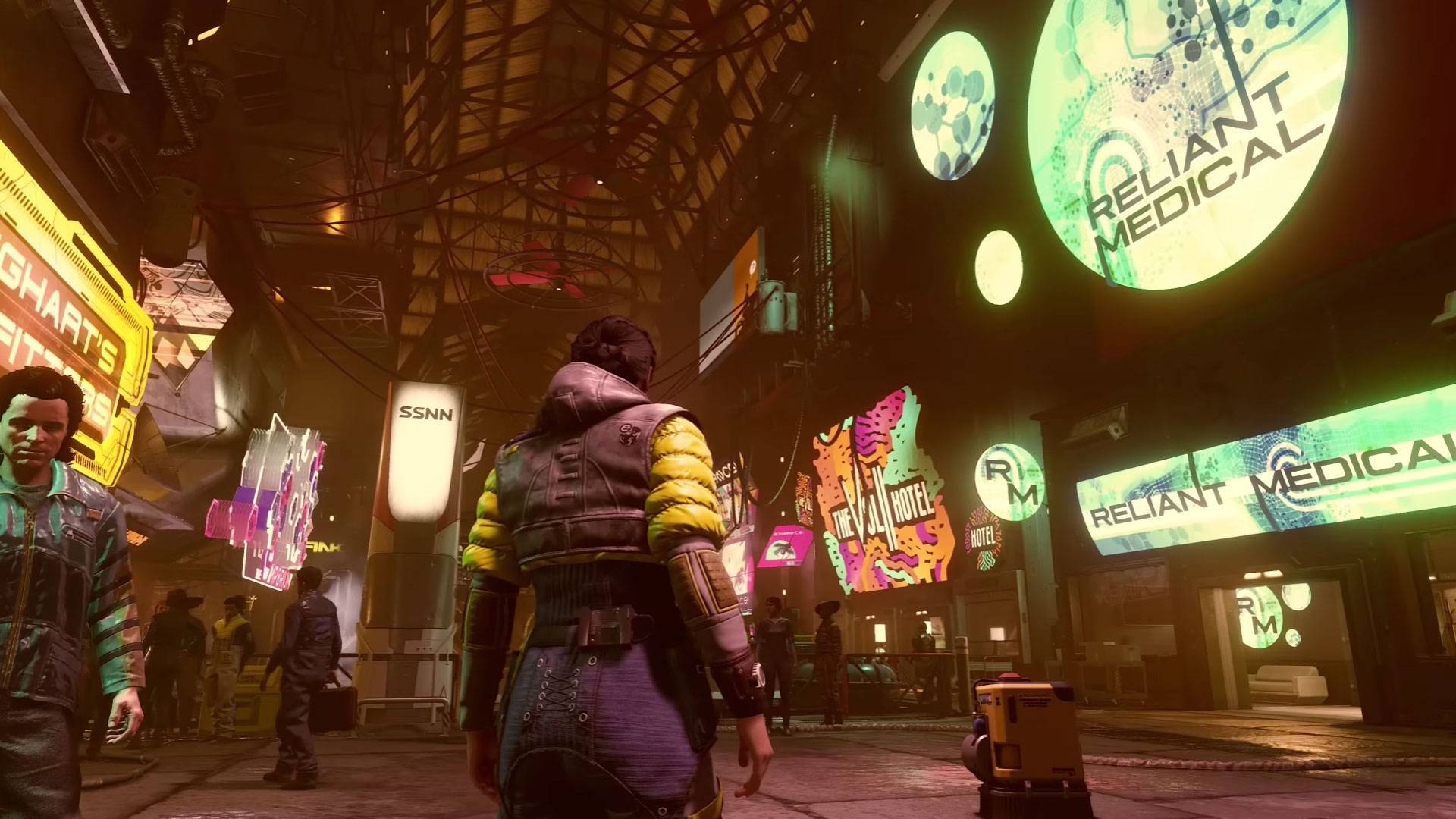Starfield's Massive Size Isn’t Bethesda's Only Selling Point
Starfield isn't only going to be Bethesda's biggest upcoming RPG but the biggest game we've played in outer space so far.
Games by Rayan on Aug 08, 2023
Starfield's Early Access launch is less than a month away, and the team has been busy answering players' many concerns and preparing them for the big day. Obviously, Starfield is not new to any of us or the game's main selling point. It's home to more than a thousand planets. These aren't just one of a thousand fictional planets in the Skybox; they're real, habitable worlds. While 125 GB may sound like a lot, considering there will be over a thousand planets in the game, it is a very reasonable size.
And ultimately, it all boils down to procedural generation, which will elicit different responses from different players. Players generally dislike procedural creation because it lacks the polish of handcrafted content, yet both methods have advantages and disadvantages. Creating something from scratch has the potential to be incredibly detailed and visually stunning. Still, it would take a studio or even an entire company a lot of time. On the other hand, procedural generation streamlines this process by allowing you to establish a set of rules to follow instead.

You will specify the specific characteristics you require. What's necessary? What must be done? What will be provided? The beauty of procedural generation is that it produces unique results every time by applying the same set of rules in different combinations. This also implies that there will be many cyclical structures. This is necessary for it to occupy the room completely. In light of this information, what strategy does Bethesda plan to employ? Is it likely that, despite more than a thousand planets, they will all look the same except for minor color variations? They've combined the two methods, so we have a hybrid of procedural and artisanal approaches.
The gameplay trailers released thus far have shown us that scanning a planet yields some basic information, so let's get to that aspect of the procedural generation process. This will include its plant and animal life, as well as its available water and other infrastructure. So, adding these as part of the rules air as the basis for the procedural generating site with these planets. What is considered part of the deal varies from planet to world. Are Wild Animals Present? What kinds of animals and insects might we expect to see? If so, what types of vegetation will benefit from the water? Is it radioactive? If it is? Is it secure? Then, it provides a list of resources, each associated with a percentage indicating how frequent or uncommon it is. This is the groundwork, and on top of it, several sets of rules will be in effect.
A range of conceivable occurrences on that planet, including the discovery of valuable loot, the acquisition of useful equipment, and other dynamic situations. This is just how things are laid out or on the surface. There would be no difference between your trip to a planet and a friend's trip to the same world; you would witness the same wildlife, flora, and water. Even dynamic occurrences and specific equipment and loot may be subject to this rule set, but you'll need to have a different perspective on them than your companion does. Making each encounter unique, yet older games that tried to randomly generate everything ended up with strange occurrences and dull gameplay.
The planet itself could be built using procedural generation. Still, Bethesda is taking things to the next level by handcrafting everything from the main structures to story elements, animals, and plants. This is comparable to the release of No Man's Sky, in which everything from the planets to the creatures to the ships was generated procedurally. Starfield's creatures, however, are not formed automatically. They've finalized the design and thought of everything to consider with this one species.

They then sent it to an artist, who went to great lengths to add all the nitty-gritty elements that bring the piece to life. As a result, procedural generation is only used to construct the planet according to its ruleset. Still, handmade content is required when the system demands the presence of certain species of wildlife. The same is true of buildings; if a particular building is necessary on a planet because it is an enemy outpost and you want to have some combat in that place, then that building will not be procedurally generated but will be handcrafted and then brought into that world as part of the rule set; one of the best examples of this is the planet Jemison in the Alpha Centauri system because on this planet is New Atlantis.
The city of New Atlantis will be the largest in the game, and it will also be the largest metropolis Bethesda has ever created in any of their games. You'll be spending a great deal of your time here. The United Colonies' government and the constellation's main offices are in this city. There are a couple of additional groups in the vicinity as well. There will be a ton of content in the main story and the many optional adventures. This could never be employed in procedural generation at this level due to its construction method, verticality, and overall size. Every time you had a plot goal to finish or a side quest you wanted to undertake, it would be a nightmare to get there.
It would be pretty challenging for you to locate specific components. The underlying algorithm would need to be quite complex for procedurally generated content to work well with players. This is because players will need to know where to go and what to do to progress through the game. As a result, New Atlantis is entirely constructed by hand. However, if you ventured beyond New Atlantis, you'd find that some areas of Jemison were procedurally produced as they weren't integral to the plot. It's possible, though, that after seeing New Atlantis in such exquisite detail, you won't want to venture out into the rest of the world.
There is some uneasiness when the topic of procedural generation is brought up. Some players like games that delve deeper than what's possible with handcrafted elements, yet this requires more time on the part of the producers, thanks to procedural generation. These vast worlds are easier to construct, but they lack the immersion of smaller ones. Bethesda plans to use a combination of procedural generation and handmade features to create these expansive open landscapes, which in this case will be planets. I'm curious to see how everything comes together if that's the case, and what happens on a planet like Jemison, where there isn't much to begin with, and everything gets very chaotic.

New Atlantis is a vast city where everything is covered, but as you explore the rest of the world, you find... nothing. And as we all know, not every planet is the same. Some planets will be more significant than others because of their location within their solar system, the presence of life or resources, the suitability of the planet for establishing outposts, or the presence of dynamic events, collectibles, or even story elements. As previously stated, only ten known planets in Starfield will feature wildlife.
Fans are already dissatisfied with this number because they hoped to visit every planet and discover something new on each one. On the other hand, this makes some sense when considering the game's realistic setting; after all, life isn't equally common across the galaxy, and that's just in real life. There is little point in scanning plants if there is no fauna to detect. Is there any point in going to that planet?
In addition to the dynamic events and activities that will be continuing victories and Collectibles, Bethesda has already disclosed a few more items. However, they are still holding back a lot of extra stuff. Now, we can only wait it out and see what happens. Overall, the ideal approach for this kind of game is definitely to combine procedural creation with handcrafted features.
Senior Editor, NoobFeed
Latest Articles
No Data.

